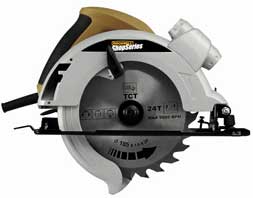
This woodworker wants to know the difference between a worm drive and a sidewinder motor for a circular saw. Are there advantages to either?
Rob Johnstone: Now you’ve opened a can of worms (sorry about that). I could ask you a bunch of questions, including: what are you planning to use it for and how often will you use it? But I would just be blowing smoke. I asked this exact question at a DeWalt tool conference where the company was offering new designs of both worm drive and the sidewinder as you called it. The answer boiled down to personal preference. There were geographic implications worm drives are more popular on the West Coast than on the East Coast, but no one knows why. There are differences in the visibility of the saw blade as you are lining up cuts, but both styles have stood the test of time with neither gaining a clear advantage over the other. In very practical terms, this means woodworkers have not found a convincing reason to choose one over the other.
Rick White: The sidewinder drive is a direct drive while the worm drive tends to be belt driven. About the only difference I’ve ever noticed is that the worm drive circular saws weigh a lot more and tend to be used in heavy duty carpentry work. So if you’ve got a big job, or many big jobs, ahead of you, take a serious look at a worm drive circular saw.
Ellis Walentine: The guys I’ve known who prefer worm-drive saws feel strongly that they are more powerful, especially for heavier cutting chores like oak construction lumber. I’ve always thought worm-drive saws were much too heavy for continuous use and weren’t really any more powerful than sidewinders. On the plus side, the left-mounted blade (of the worm-drives I’ve known) is an advantage; it is more natural to rest the sole of the saw on your stock as you cut from right to left.






